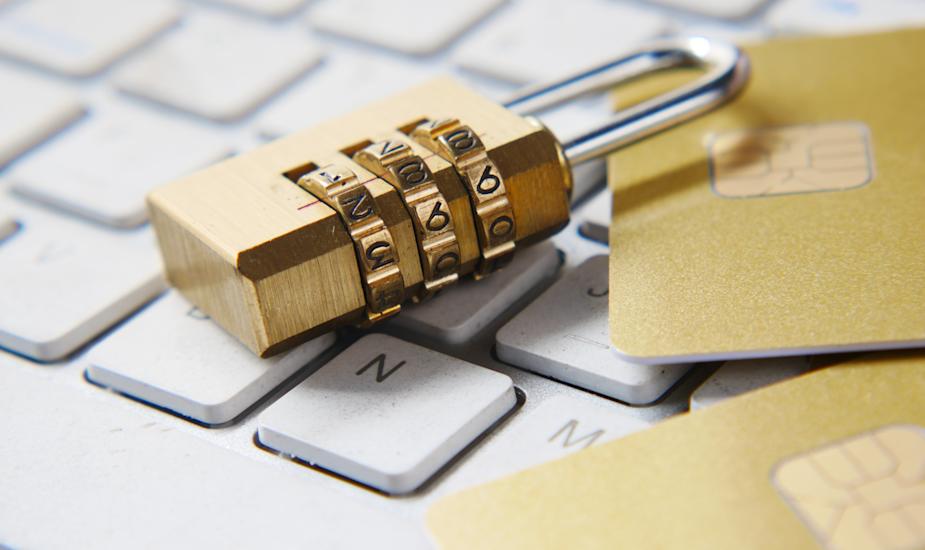Data security - quick’n’easy
3 minute read

Data security is generally understood to cover all technical aspects that serve to protect data. Three objectives are essential to ensure data security: confidentiality, integrity and availability.
-
Confidentiality means that access to data or a certain set of data can only be made by authorized persons.
-
Integrity is also very important for data security. Integrity stands for the integrity of the data with regard to manipulation as well as through technical defects.
-
Availability means that existing data can be used without any problems in case of need.
We have summarized the most important aspects of how to protect yourself and your data on the Internet in a few steps.
1. Data economy
What is not disclosed on the Internet cannot be stored. Once information is spread on the Internet, it is difficult to delete or retrieve it.
Use only the most necessary information on the Internet as a general rule.
Refrain completely from disclosing information about your private life, personal or financial interests; these have no place on the Internet. Never give out passwords and account information to third parties on the Internet or over the phone – no matter what the emergency or urgency.
Think carefully about whether and which private photos you post on social media.
Even if you limit visibility to specific people, such photos may become public as well – because someone else posts them or due to a technical error.
2. 2-factor authentication for online accounts.
Choosing a strong password and, of course, using different passwords for different accounts is a basic requirement for data security. However, this alone is not always enough to protect mobile devices from the most common threats.
It is highly recommended to use a second, dynamic code – which is regenerated each time as needed – in addition to the password of your smartphone to protect the various accounts. This way, online accounts remain secure even if the password actually falls into the wrong hands.
The most common form of this so-called 2-factor authentication is sending a code via SMS to the smartphone as soon as the password is used to log into an online account. The code sent is then additionally entered before access is granted.
This type of 2-factor authentication is very secure because personal knowledge (password) is combined with the smartphone and only those who have both are granted access to the account.
Even more secure are 2-factor methods where the code is generated directly on the smartphone. This is best done via special apps available in official app stores.
3. Encryption of hard drive
Encrypting your own hard drives on your PC or laptop is an important step towards more data security. Especially the hard drives from laptops can be removed and inserted into another PC by professionals in seconds.
If the hard drives are encrypted, then the data they contain will only be displayed to a criminal as incoherent symbols. Of course, there doesn't always have to be criminal intent, as hard drive encryption also provides protection against prying eyes and unlawful access if the laptop is lost.
4. Secure personal Wi-Fi networks
Home routers and personal Wi-Fi networks have come under increasing scrutiny from fraudsters in recent years, as they are often very carelessly protected. Wireless signals radiate in all directions, so it's imperative to choose a secure encryption method to keep out spies and data thieves.
The vulnerabilities in older security protocols such as WEP can be exploited by data thieves in a matter of minutes.
Even though modern routers have now replaced WEP with WPA or WPA2, you should check the status of older models in particular. Often, the device can be quickly replaced via the provider.
WPA is no longer considered 100% secure these days, because it relies on the outdated TKIP encryption protocol. Therefore, a secure router should always work with WPA2 and AES encryption. If the router does not support these security mechanisms, the device should be changed.
Common SSIDs like "Home", "WLAN" or "WLAN Network" should also be changed to something unique. Since WPA/WPA2 use the SSID as a component for the encryption passcode.
5. Mobile payment: pay securely with your smartphone
Mobile payment has established itself as a simple payment method. Application-oriented improvements and high security standards have made contactless payment with smartphones socially acceptable.
If you take care of your smartphone and follow certain security precautions, you will be much safer with mobile payment than with a credit card in your ordinary wallet.
To use mobile payment securely, it is advisable to activate the device's location detection. If the smartphone is lost, the device can be located and locked, and all data deleted.
Smartphones and the corresponding app used for payment should always be secured with a blocking code. Biometric methods, such as fingerprint (Touch ID) and facial recognition (Face ID), can be used to secure the smartphone.
Biometric methods are preferable to an unlock code, which can possibly be spied out.
A simple rule: The screen lock should always be activated to easily secure the smartphone from unauthorized access.
Install the desired payment app exclusively from an official app store, like Samsung Pay. Only one necessary card should ever be added to the wallet, otherwise all cards will have to be blocked if the smartphone is lost.